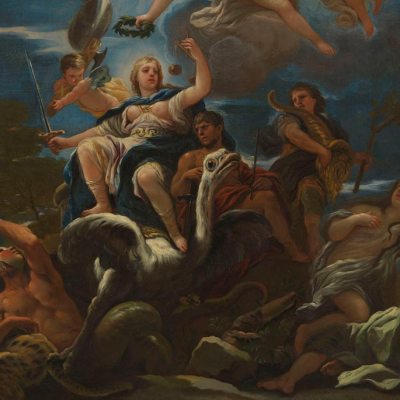Smaller museums and galleries often get overlooked in the national and international press. In a new series, Apollo asks museum directors and curators what makes their small wonders so unique. Perdita Hunt is the director of Watts Gallery in Compton.
Can you tell us a bit about the gallery’s history?
Watts Gallery was opened in 1904. It was founded by George Frederic Watts (1817–1904) one of the great Victorian artists and his second wife, Mary Seton Watts (1849–1838) a ceramic artist. The gallery, which was also built to include a hostel for apprentice potters, was founded on the vision of Art for All.
What makes this collection unique?
Watts Gallery is the only purpose-built art gallery for a single professional artist. The collection includes over 250 oil paintings, over 700 drawings and 1000 sculptures by G.F. Watts. Watts was a poet painter whose work includes the great series of portraits of leading Victorians, ‘The Hall of Fame’, allegories, and landscape paintings.
How does it relate to the local area?
Watts Gallery is described as a national gallery in the heart of a village. The gallery is situated in an estate of buildings which include the original Compton Pottery and is 300 yards from Compton Chapel. Alongside the Watts Gallery Estate is the Pilgrim’s Way, part of the North Downs Way. It is also on a national cycle route (N22).
How did you come to work here?
I visited the Watts Chapel in the 1980s and never forgot the experience. In the 1990s I moved to Surrey. I was appointed a trustee of Watts Gallery Trust in 2003 and then invited to become the director in 2004. Watts Gallery had always intrigued me as it felt like a sleeping giant – a hidden gem from a lost time.
What are the greatest challenges of running a small museum?
The greatest challenges are maintaining standards of excellence in all that we do (exhibitions, events, learning, visitor facilities, interpretation, research); finding the resources to deliver those standards on a year-round basis; managing staff and volunteers so that they feel respected and cherished; being forever watchful on security and health and safety; working with the local community to ensure that the impact of the gallery and its visitors is sensitive to the rural environment; and meeting the needs and expectations of very different cross-section of people
What is your personal highlight from the collection?
I love the drawing of Hope. This is an iconic work which was known the world over in the early 20th century. The painting inspired Barack Obama who entitled his recent book The Audacity of Hope. The work depicts a blindfolded girl astride the globe playing an instrument with only one string, and yet she is making music. It is moving symbol of hope over despair.
How well you do you feel you know the collection? Does it continue to surprise you?
I feel very privileged to have the opportunity to walk through the Watts collection every day. As we are a daylight gallery it is a great joy to be able to discover the different hues of the paintings as the light changes. Watts continues to surprise. He painted different genres and different subjects. We are only now beginning to discover his drawings, which have not been shown because of the conditions of the gallery. This is a new chapter in discovering the Watts story.
How has the museum developed during your tenure?
Nearly 10 years ago the Watts Gallery was at risk. There was rain coming through the roof, the collection was in disrepair, there were very few visitors and there was threat of closure. Since then, Watts Gallery has undergone a £10 million restoration, is now accredited, has shown over 15 exhibitions (some of which are of national importance), has an innovative Art for All learning and outreach programme, was a finalist in the Art Fund Museum of the Year award, and employs a staff of 15 with over 300 volunteers.
And what does the future hold for the Watts Gallery?
Watts Gallery Trust is seeking to secure the Watts house and studio across the lane from Watts Gallery to develop Compton as an artists’ village and a centre for exploring Victorian art, social history, craft and design. The Trustees are also in negotiation with Compton Parish Council to take over the management of the Watts Chapel. The Watts Estate is therefore unique in comprising a Gallery, a hostel for apprentice potters, a pottery, a chapel and an artists’ house and studio.
Perdita Hunt is the director of Watts Gallery in Compton, Surrey.
The Watts Gallery’s current exhibition, ‘The Making of Mary Seton Watts’, is open until 19 January 2014.



